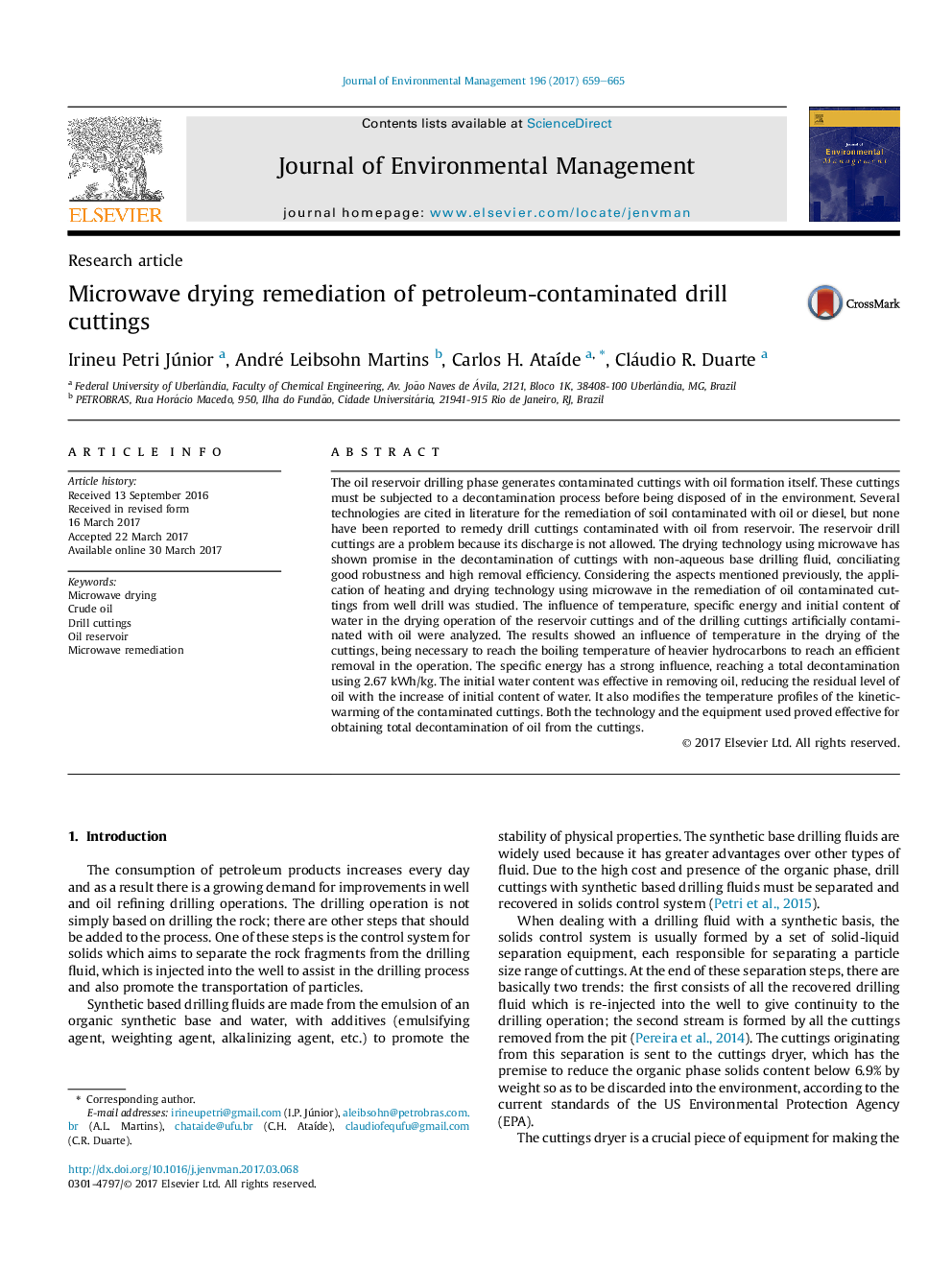| کد مقاله | کد نشریه | سال انتشار | مقاله انگلیسی | نسخه تمام متن |
|---|---|---|---|---|
| 5116704 | 1485220 | 2017 | 7 صفحه PDF | دانلود رایگان |
- Microwave remediation of petroleum-contaminated drill cuttings was accomplished.
- Specific energy and temperature had strong influence in microwave remediation.
- Water levels in cuttings had a contribution reducing residual level of petroleum.
- Microwave remediation was able to obtain an almost complete decontamination levels.
- There was neither oxidation nor emission of petroleum into atmosphere.
The oil reservoir drilling phase generates contaminated cuttings with oil formation itself. These cuttings must be subjected to a decontamination process before being disposed of in the environment. Several technologies are cited in literature for the remediation of soil contaminated with oil or diesel, but none have been reported to remedy drill cuttings contaminated with oil from reservoir. The reservoir drill cuttings are a problem because its discharge is not allowed. The drying technology using microwave has shown promise in the decontamination of cuttings with non-aqueous base drilling fluid, conciliating good robustness and high removal efficiency. Considering the aspects mentioned previously, the application of heating and drying technology using microwave in the remediation of oil contaminated cuttings from well drill was studied. The influence of temperature, specific energy and initial content of water in the drying operation of the reservoir cuttings and of the drilling cuttings artificially contaminated with oil were analyzed. The results showed an influence of temperature in the drying of the cuttings, being necessary to reach the boiling temperature of heavier hydrocarbons to reach an efficient removal in the operation. The specific energy has a strong influence, reaching a total decontamination using 2.67Â kWh/kg. The initial water content was effective in removing oil, reducing the residual level of oil with the increase of initial content of water. It also modifies the temperature profiles of the kinetic-warming of the contaminated cuttings. Both the technology and the equipment used proved effective for obtaining total decontamination of oil from the cuttings.
321
Journal: Journal of Environmental Management - Volume 196, 1 July 2017, Pages 659-665
